
The Broadway Bridge is a Rall-type bascule bridge spanning the Willamette River in Portland, Oregon, United States, built in 1913. It was Portland's first bascule bridge, and it continues to hold the distinction of being the longest span of its bascule design type in the world. It was added to the National Register of Historic Places in November 2012.

Metro is the regional government for the Oregon portion of the Portland metropolitan area, covering portions of Clackamas, Multnomah, and Washington Counties. It is the only directly elected regional government and metropolitan planning organization in the United States. Metro is responsible for overseeing the Portland region's solid waste system, general planning of land use and transportation, maintaining certain regional parks and natural areas, and operating the Oregon Zoo, Oregon Convention Center, Portland's Centers for the Arts, and the Portland Expo Center. It also distributes money from two voter-approved tax measures: one for homeless services and one for affordable housing.

Simon Benson was a noted Norwegian-born American businessman and philanthropist who was active in the city of Portland, Oregon.

Thomas Jefferson Dryer was a newspaper publisher and politician in the Western United States. A member of the Oregon Territorial Legislature in 1857, Dryer is best remembered as the founder of The Oregonian, an influential and enduring newspaper in the American state of Oregon.

Asa Lawrence Lovejoy was an American pioneer and politician in the region that would become the U.S. state of Oregon. He is best remembered as a founder of the city of Portland, Oregon. He was an attorney in Boston, Massachusetts before traveling by land to Oregon; he was a legislator in the Provisional Government of Oregon, mayor of Oregon City, and a general during the Cayuse War that followed the Whitman massacre in 1847. He was also a candidate for Provisional Governor in 1847, before the Oregon Territory was founded, but lost that election.
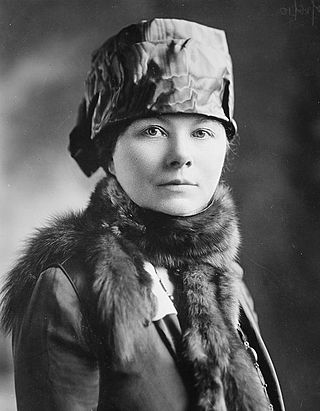
Esther Pohl Lovejoy was an American physician and public health pioneer, suffrage activist, congressional candidate, and a central figure in early efforts to organize international medical relief work. In 1907, Lovejoy became the first woman appointed to direct a department of health in a major U.S city: the Board of Health in Portland, Oregon. Lovejoy worked on the women's suffrage campaigns in Oregon in 1906 and 1912, and founded the Everybody's Equal Suffrage League ahead of the 1912 election, when Oregon became the 7th state to grant women the right to vote. Lovejoy was among the founders of the Medical Women's International Association and was elected as its first president in 1919. Lovejoy ran for the U.S. Congress in 1920 as the Democratic candidate for Portland’s Third District but was not successful against the sitting Republican. She was awarded the Elizabeth Blackwell Medal by the American Medical Women's Association in 1951 and 1957 for contributions to the field of medicine. On July 21, 2012, the Century of Action Committee honored her and three other suffragists—Harriet Redmond, Harry Lane, and Martha Cardwell Dalton—by installing new headstones for them at the Lone Fir Pioneer Cemetery, where their initial headstones had become overgrown. The installation ceremony included costumed portrayals of the four suffragists and was attended by Barbara Roberts, a former Oregon governor. This event took place as part of the Century of Action Committee's year-long celebration of 100 years of suffrage for women in Oregon and as part of their efforts to call attention to remaining voting barriers for minorities.
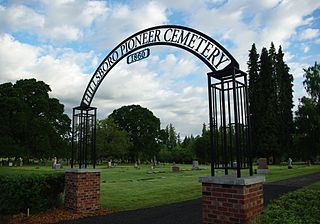
The Hillsboro Pioneer Cemetery is a pioneer cemetery in Hillsboro, Oregon, United States. It is located at the west end of the city along the Tualatin Valley Highway and adjacent to Dairy Creek. The 8.42-acre (3.41 ha) cemetery comprises three formerly private cemeteries. In 1973, the city of Hillsboro gained title to what is the oldest cemetery in Washington County.

River View Cemetery is a non-profit cemetery located in the southwest section of Portland, Oregon. Founded in 1882, it is the final resting place of many prominent and notable citizens of Oregon, including many governors and members of the United States Senate. Other notable burials include Henry Weinhard's family, W.A.S.P Pilot Hazel Ying Lee, football player Lyle Alzado, baseball player Carl Mays, and famous western lawman Virgil Earp.
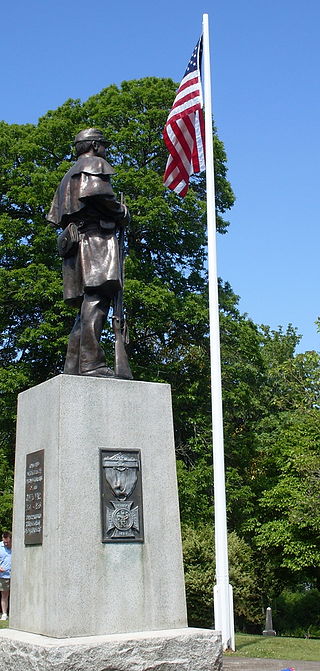
The Grand Army of the Republic Cemetery is a cemetery for American Civil War veterans in the U.S. city of Portland, Oregon. It is located at S.W. Palatine Hill Road and S.W. Boones Ferry Road, next to River View Cemetery.

James B. Stephens was a pioneer of the U.S. state of Oregon. A cooper by trade, he operated one of the first ferries across the Willamette River at what was East Portland, Oregon. His father was the first burial at Portland's Lone Fir Cemetery. A native of Virginia, he was the founder of East Portland and Stephens Street in Portland, Oregon is named in his honor.

William Sargent Ladd was an American politician and businessman in Oregon. He twice served as Portland, Oregon's mayor in the 1850s. A native of Vermont, he was a prominent figure in the early development of Portland, and co-founded the first bank in the state in 1859. Ladd also built the first brick building in Portland and was a noted philanthropist. Part of his former estate, the Ladd Carriage House, is on the National Register of Historic Places.

James C. Hawthorne was an American physician and politician in the states of California and Oregon. A native of Pennsylvania, he was the co-founder of the Oregon Hospital for the Insane in East Portland, Oregon. Hawthorne served in the California Senate and was a member of the Whig Party and later the Democratic Party.
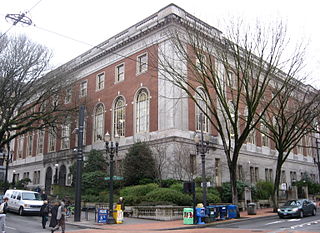
The Central Library is a three-story public library branch in the downtown core of Portland, Oregon, United States. Opened in 1913, it serves as the main branch of the Multnomah County Library system. In 1979, the Georgian style building was added to the National Register of Historic Places as the Central Building, Public Library. The library underwent major structural and interior renovations in the mid 1990s.

Gazelle was an early sidewheeler on the Willamette River in what is now the U.S. state of Oregon. She did not operate long, suffering a catastrophic boiler explosion on April 8, 1854, less than a month after her trial voyage. This was the worst such explosion ever to occur in the Pacific Northwest states. The wrecked Gazelle was rebuilt and operated for a few years, first briefly as the unpowered barge Sarah Hoyt and then, with boilers installed, as the steamer Señorita. A victim of the explosion was D.P. Fuller, age 28, who is buried in Lone Fir Cemetery in Portland, Oregon.

Gresham Pioneer Cemetery, founded in 1859, lies on the east side of Southwest Walters Road in Gresham, Oregon, United States. The cemetery is bordered by the Springwater Corridor Trail and Johnson Creek on the south and by Escobar Cemetery, adjacent on the west and not clearly separated from Gresham Pioneer Cemetery. White Birch Cemetery, founded in 1888, lies on the west side of Southwest Walters Road across from the other two cemeteries. All are one block west of Gresham's Main City Park and about a half-block south of Southeast Powell Boulevard.

Earl Riley was an Oregon politician and businessman, and mayor of Portland, Oregon, United States, from 1941–1949.

Mount Calvary Cemetery in the West Hills of Portland, Oregon, United States, is a private cemetery owned and maintained by the Roman Catholic Archdiocese of Portland in Oregon. It is the second-oldest Catholic cemetery in Multnomah County, and was the third cemetery built in the West Hills.
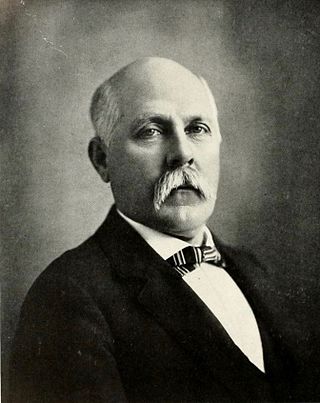
Henry Spoor Rowe was an American businessman and politician. He served as the Mayor of Portland, Oregon, from 1900 to 1902.

Harriet Redmond, also known as Hattie Redmond, was an African-American suffragist who lived and worked in Portland, Oregon. Born in St. Louis, Missouri, she moved to Oregon at a young age where she then became an active member of the suffragist movement.























